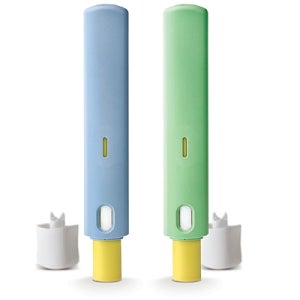 Manufacturing Chemist, an established publication in the biopharmaceutical industry, recently approached SHL to share with their readers the company’s knowledge and experience from working with numerous autoinjector development projects. The article is based on the recently published white paper ‘Autoinjectors: From Planning to Launch’ but provides the content in a more condensed manner.
Manufacturing Chemist, an established publication in the biopharmaceutical industry, recently approached SHL to share with their readers the company’s knowledge and experience from working with numerous autoinjector development projects. The article is based on the recently published white paper ‘Autoinjectors: From Planning to Launch’ but provides the content in a more condensed manner.
Abstract
The autoinjector is one of the fastest emerging drug delivery solutions. It consists of a pre-filled syringe or cartridge inside a device that applies enough force to inject fully the desired drug within the specified requirements. Insufficient planning and early conceptual design vulnerabilities can result in quality issues, prolonged project timeline and increased cost. A device manufacturing partner will therefore need basic mechanical device knowledge and regulatory experience.
Many new drugs require innovative devices such as autoinjectors for drug delivery. Medical device developer SHL Group discusses how to plan their development.
Looking at self-administration therapy trends, injectable drug delivery devices such as pen injectors, autoinjectors and needle-free injectors show significant growth potential. It is estimated that the market for pen systems and autoinjectors will reach $870m (€654m) in 2013 and $1.07bn (€804m) in 2015. Industry analysts estimate that more than 30% of all new product submissions to the FDA are combination products. Among these, the autoinjector is one of the fastest emerging drug delivery solutions.
While the autoinjector is now considered commercially suitable for the delivery of therapeutic drugs, to develop such a device successfully requires detailed planning, combination product knowledge, regulatory awareness and close collaboration with a carefully chosen device manufacturer.
An autoinjector consists of a pre-filled syringe (PFS) or cartridge inside a device that applies enough force to inject fully the desired drug within the specified requirements. Both of these components are regulated and together define the autoinjector as a combination product.
Click here to see the full article (to read the full article, you need to be a subscribed reader of Manufacturing Chemist).
